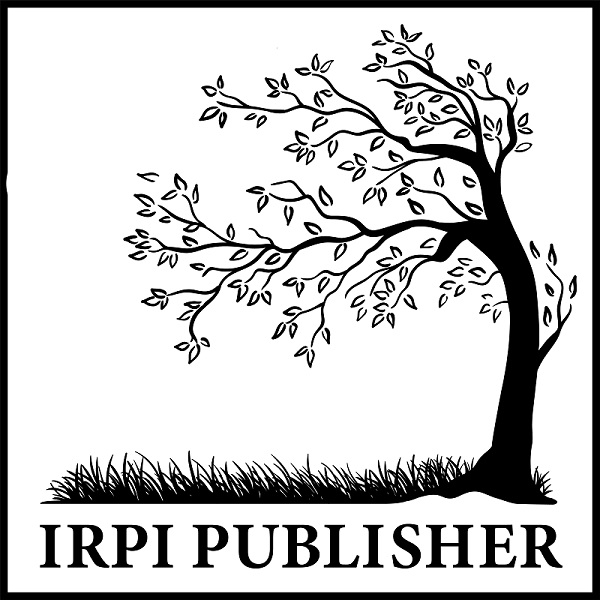The Classpoint Utilization Training in Supporting differentied Instruction For Teacher of SMP 21 Dumai
Pelatihan Pemanfaatan Classpoint dalam Mendukung Pembelajaran Terdiferensiasi bagi Guru SMP Negeri 21 Dumai
DOI:
https://doi.org/10.57152/consen.v5i1.1800Keywords:
training, classpoint, learning media, differentiatedAbstract
The results of the situation analysis show that the implementation of differentiated learning at SMPN 21 Dumai is not yet optimal, this is proven by the content indicators that teachers still depend on the material in books. Based on the problems faced, the solution that can be presented is Classpoint-Based Learning Media Training to Realize Differentiated Learning. The results of the training showed that of the 25 participants who developed learning media, 11 people or 44% of participants achieved very good criteria, 12 participants or 48% achieved good criteria, and 2 people or 8% of participants achieved low criteria. If we look at the overall average score, the Classpoint Teacher learning media training participants at SMP Negeri 21 Dumai achieved very good criteria, namely a score of 85.3%. Thus, the Classpoint Utilization training for Dumai 21 Public Middle School teachers can be said to be successful. Classpoint-based learning media training is a strategic step in supporting differentiated learning. By utilizing technology, teachers can more effectively meet students' unique needs, creating inclusive and engaging learning environments
Downloads
References
W. W. M. P. Sundariati, “Implementasi Pembelajaran Berdiferensiasi dengan Menggunakan Media Wordwall pada Pembelajaran Biologi Kelas X,” J. Pemikir. dan Pengemb. Pembelajaran Implementasi, vol. 5, no. 20, pp. 473–478, 2023.
M. D. Nafisa and R. Fitri, “Implementasi Kurikulum Merdeka Dalam Penerapan Pembelajaran Berdiferensiasi di Lembaga PAUD,” J. Stud. Guru dan Pembelajaran, vol. 6, no. 2, pp. 179–188, 2023, doi: 10.30605/jsgp.6.2.2023.2840.
Ayu Sri Wahyuni, “Literature Review: Pendekatan Berdiferensiasi Dalam Pembelajaran IPA,” J. Pendidik. Mipa, vol. 12, no. 2, pp. 118–126, 2022, doi: 10.37630/jpm.v12i2.562.
T. P. Mustika, Z. Zulhafizh, O. Rasdana, and P. S. Pernantah, “Mapping reading attitudes of high school students: Information mastery strategy,” J. Res. Instr., vol. 3, no. 2, pp. 196–206, 2023.
C. A. (2017). H. to D. I. in A. D. C. A. Tomlinson, How to Differentiate Instruction in Academically Diverse Classrooms. ASCD, 2017.
E. Septyanti, Z. Zulhafizh, T. P. Mustika, and A. Asnawi, “Profile of The Needs for Digital-Based Listening Learning Media in Higher Education?: Responding to The Challenges of 21st Century Learning,” J. Kependidikan J. Has. Penelit. dan Kaji. Kepustakaan di Bid. Pendidikan, Pengajaran dan Pembelajaran, vol. 9, no. 4, p. 1150, 2023, doi: 10.33394/jk.v9i4.8736.
R. S. Malik, “Educational Challenges in 21St Century and Sustainable Development,” J. Sustain. Dev. Educ. Res., vol. 2, no. 1, p. 9, 2018, doi: 10.17509/jsder.v2i1.12266.
S. Ningsih, Murtadlo, and M. I. Farisi, “Pengembangan Media Pembelajaran Berbasis Web Google Sites Untuk Meningkatkan Hasil Belajar Siswa Sekolah Dasar,” Jambura J. Educ. Manag., vol. 4, no. 1, pp. 108–122, 2023, [Online]. Available: https://ejournal-fip-ung.ac.id/ojs/index.php/jjem/index
R. Rizal, E. Susilo, and S. Nasution, “Improving Student’s Coding Skill with Gamification Website-based Program,” Int. J. Electr. Energy Power Syst. Eng., vol. 4, no. 3, pp. 191–195, 2021, doi: 10.31258/ijeepse.4.3.191-195.
D. Kearney, S., & Maher, “Teaching with Technology: The Role of Classpoint in Differentiated Learning,” J. Technol. Teach. Educ., vol. 30, no. 2, pp. 157–176, 2022.
et al Chen, Y., “The Impact of Technology-Enhanced Learning on Student Engagement in Higher Education,” J. Educ. Technol. Soc., vol. 23, no. 1, pp. 27–39, 2020.
S. Santosa, “Meningkatkan Kemampuan Menyusun Modul Ajar Terdiferensiasi melalui Bimbingan dan Pendampingan bagi Guru-Guru Pendidikan Pancasila dan IPS SMP Binaan F Semarang Tahun 2022,” Media Penelit. Pendidik. J. Penelit. dalam Bid. Pendidik. dan Pengajaran, vol. 17, no. 1, pp. 195–205, 2023, doi: 10.26877/mpp.v17i1.14882.
M. U. Gusteti and N. Neviyarni, “Pembelajaran Berdiferensiasi Pada Pembelajaran Matematika Di Kurikulum Merdeka,” J. Lebesgue J. Ilm. Pendidik. Mat. Mat. dan Stat., vol. 3, no. 3, pp. 636–646, 2022, doi: 10.46306/lb.v3i3.180.
N. Rahmawati, R. P. Irawati, and ..., “Pelatihan Model Pengembangan Pembelajaran Terdiferensiasi Bagi Forum Mgmp Bahasa Arab Wilayah Jawa Tengah,” Community …, vol. 4, no. 4, pp. 8119–8126, 2023, [Online]. Available: http://journal.universitaspahlawan.ac.id/index.php/cdj/article/view/18464
L. Harris, J., & Wang, “The Future of Differentiated Learning: Leveraging Technology to Support Diverse Learners,” Educ. Res. Rev., vol. 38, pp. 100–115, 2023.
et al. Zhang, D., “Integrating Digital Tools into Differentiated Instruction: A Case Study,” Int. J. Educ. Technol. High. Educ., vol. 18, no. 1, pp. 45–59, 2021.
D. Citraningsih and R. R. S. Wiranata, “Analisis SWOT pembelajaran daring era pandemi covid-19 pada sekolah dasar,” Humanika, vol. 22, no. 1, pp. 21–40, 2022, doi: 10.21831/hum.v22i1.47092.
Downloads
Published
How to Cite
Issue
Section
License
Copyright (c) 2025 Tria Putri Mustika, Rahmat Rizal Andhi Andhi, Filma Alia Sari Sari, Charlina Charlina, Hasnah Faizah Faizah, Mangatur Sinaga Sinaga

This work is licensed under a Creative Commons Attribution 4.0 International License.
- Authors retain copyright and grant the journal right of first publication with the work simultaneously licensed under a Creative Commons Attribution License (CC-BY) that allows others to share the work with an acknowledgment of the work's authorship and initial publication in this journal.
- Authors are able to enter into separate, additional contractual arrangements for the non-exclusive distribution of the journal's published version of the work (e.g., post it to an institutional repository or publish it in a book), with an acknowledgment of its initial publication in this journal.
- Authors are permitted and encouraged to post their work online (e.g., in institutional repositories or on their website) prior to and during the submission process, as it can lead to productive exchanges, as well as earlier and greater citation of published work (See The Effect of Open Access).
















